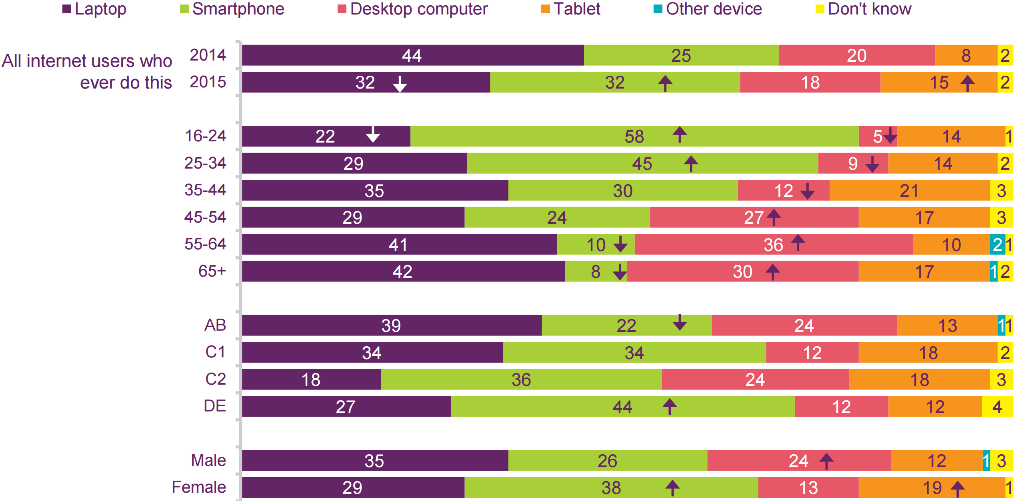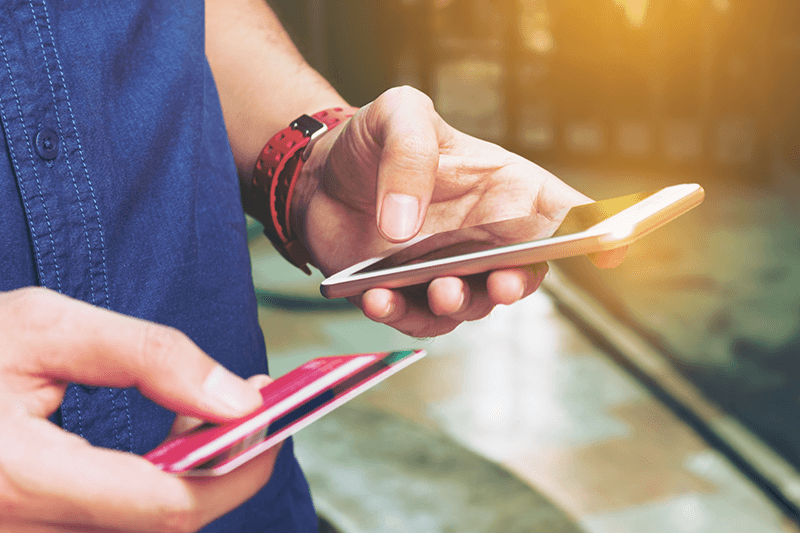40% of us pay bills online – loan repayments, utility bills, service charges – and as Ofcom’s research illustrates, we’re increasingly likely to use our phones.
How important is mobile as a channel for receiving payment for products and services?
Asked that question, most people think about eCommerce / retail, and that’s certainly where much of the ‘noise’ is. As at February 2016, the amount of orders received on mobile devices out of all eCommerce had increased to 30%, up from 26% in 2015.*
However, the conversion rate rate for shoppers accessing a site on smartphones is just 3.05% in the UK, compared to 5.39% on a desktop – which indicates that retailers have some way to go to combat the distractions and difficulties that come with smaller screens.*
This isn’t news to most people. What you might not be aware of is the considerable growth in people who choose to pay bills online, and more particularly, via their smartphone.
Paying bills online is more popular than buying items online
Paying bills online for utilities, service charges, deposits, loans etc. doesn’t get nearly the same coverage as online shopping, but a recent study by Ofcom demonstrated that it’s a considerably more popular activity.
As the table illustrates, the group most likely to pay bills online is 25-44 year olds (50%) followed by 45-54 year olds (42%).
Looking at this in more detail, we can see that there’s a growing number of people using their smartphone as the device they’re most likely to use for this purpose, particularly women aged 16-34.
If you’ve already made it possible for your customers to pay their bills via your website, you’re definitely headed in the right direction – but it’s clearly increasingly important that they’re able to make payment via their smartphone.
Given that the change is being driven by millennials, who accounted for 24% of the adult population in the EU in 2013*, I’d expect to see the smartphone overtake laptop and desktop computers combined over the next couple of years.
People aged 16-45 are more likely to access the internet on a smartphone (86.3%) as opposed to a desktop computer (76.3%). Source: Ofcom
Does this mean you have to have an app?
Another interesting finding of the Ofcom research is that currently, 41% of users prefer to use an app, and 43% prefer to use a browser.
Our team have researched whether an app or a mobile website is a better fit for your business needs, and for the most part, an app is prohibitively expensive to develop and promote. But to compete with the user experience on an app, your mobile website will need the following:
- Fast load times, even in slow internet connection areas
- Few distractions so that the goal (making a payment) is easy to reach
- Finger-friendly field sizes and selections
- To be PCI compliant, protecting your customers’ data.
Getting started
A lot of the companies I’ve spoken to in 2016 have already spotted that their current payment offerings aren’t mobile friendly, and they need to adapt to meet the requirements of their customers.
We’ve worked with them to create a payment Mobile Journey to complement their existing IVR and web based payment channels. This makes it convenient for their customers to make payments at any time, from any device, completely securely.
Mobile Journeys provide an app-like experience without the expense or challenges associated with app development and adoption. Not yet convinced? Perhaps Darwin can help:
“It is not the strongest of the species that survives, nor the most intelligent. It is the one that is the most adaptable to change.” Charles Darwin
*Sources: Smartinsights, Ofcom, Pew Research





